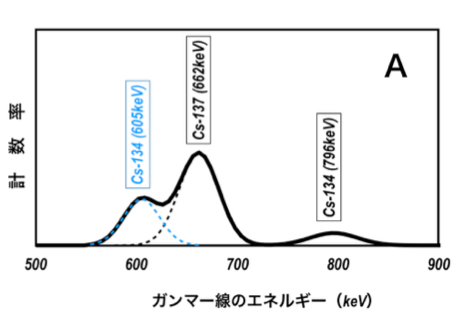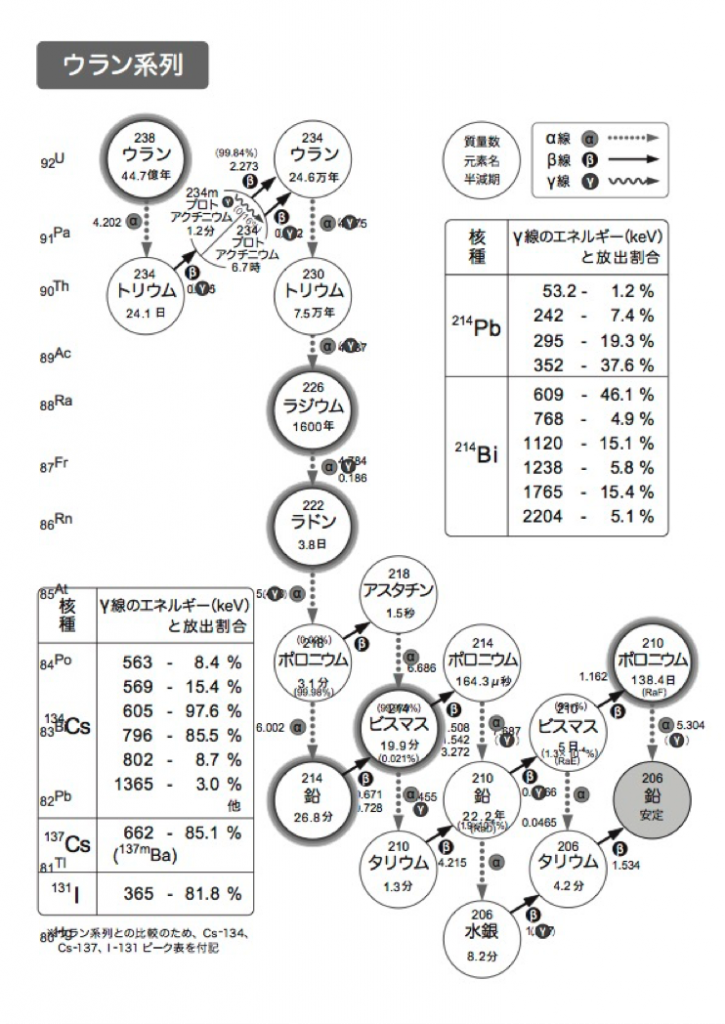Cesium quantitative verification in soil measurement with NaI scintillation counter
Germanium semiconductor detectors (Ge) and NaI scintillation detectors (NaI) are typical gamma-ray detectors commonly used.
The former has a high "energy resolution" (the ability to distinguish γ-ray energy), and it is possible to finely distinguish and measure simultaneously coexisting γ-rays.
Since the equipment itself is expensive (it costs nearly 10 million yen) and maintenance costs are high (the liquid nitrogen needs to be constantly cooled and more than several tens of thousands yen per month), most of citizen measurement rooms cannot purchase it.
On the other hand, NaI scintillation detectors (NaI) are used in most citizen measurement rooms because their price is lower than Ge (it still costs several million yen) and detection efficiency (the number of detected radiation) is high. , "Energy resolution" is is low.
For this reason, we were faced with the problem that it is not possible to clearly distinguish the gamma rays of the target nuclides (Cs-137, Cs-134, I-131, etc.) from the other gamma rays that coexist. In the case of soil samples containing a large amount of natural nuclides that emit gamma rays close to the energy of the target nuclide, there were difficulties when the amount of radioactive cesium contained is low.
This trend has been found to differ by NaI model and software.
In order to make the value of radioactivity measured in the soil project more reliable, we will carry out a subproject to check the measurement accuracy of each model and correct it as necessary.
As for the details, please see the report materials of "verification project" that was carried out with the Takagi Foundation's support.
Disruption of uranium series nuclides for radioactive cesium determination
The soil is rich in natural radionuclides (such as uranium and thorium series).
Among them, uranium series bismuth 214 (Bi-214) is a troublesome person in quantifying radioactive cesium with the NaI scintillation detector.
The figure below shows "Uranium series nuclides" and their "typical γ-ray energy" .
When uranium undergoes nuclear decay many times, it emits radiation such as alpha rays, beta rays, and gamma rays and mutates to different elements.
Although each energy is different, it can be seen that “609 keV” of bismuth 214 and “605 keV” of cesium 134 are very close.
Below is the chart of Collapse of uranium series to stability
In the figure below, a “typical gamma-ray spectrum example” is shown to compare gamma-ray spectra with and without interference of uranium series nuclides.
The γ-ray spectrum of foods that are less susceptible to natural nuclides is relatively simple (Figure A).
The peak of cesium 137 (662 keV) and the peak of cesium 134 (605 keV) partially overlap because of the low energy resolution of NaI. Therefore each other affects the determination of cesium-137 and cesium-134.
In the case of cesium-134, analysis with another peak (796 keV) can avoid the interference of cesium-137, but the effect can not be avoided with cesium-137, which has only one peak.

On the other hand, soil sample to which the influence of bismuth 214 of uranium series is added, a large influence appears on the quantitative value of cesium (Figure B).
The “609 keV” of bismuth 214 and the “605 keV” of cesium 134 are too close to each other in the spectrum, so the ability of NaI can not distinguish which was detected.
Therefore, bismuth 214 (nuclides contained in the rain) contained in the soil may be erroneously detected as cesium 134, and as a result, the quantitative value of cesium 137
may be affected (the influence is caused by the calculation method of the model etc. The value changes).

Similar false positives tend to occur when quantifying radioactive iodine (I-131) in soil samples.
That is because NaI can not distinguish the γ-ray energy (365 keV) of radioactive iodine (I-131) and lead 214 (352 keV) of uranium series.
From the past verification work, uranium series nuclides in the soil have an influence on the quantitative value of radioactive cesium that appears mostly when the concentration of radioactive cesium contained is as low as 50 becquerels / kg or less.
Therefore, we conclude that the contribution of uranium series nuclides is negligible in soils contaminated with high concentrations of radioactive cesium.

